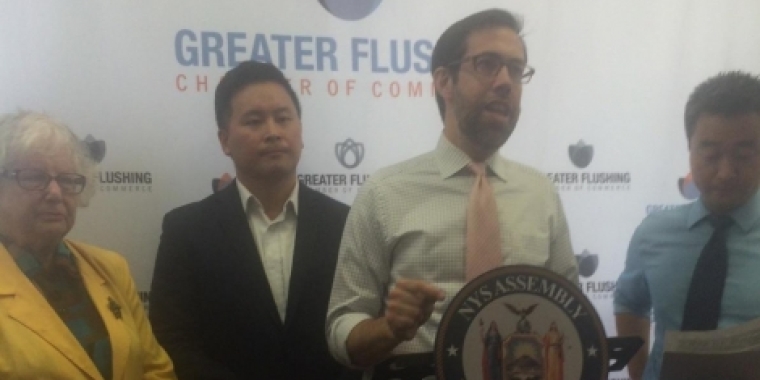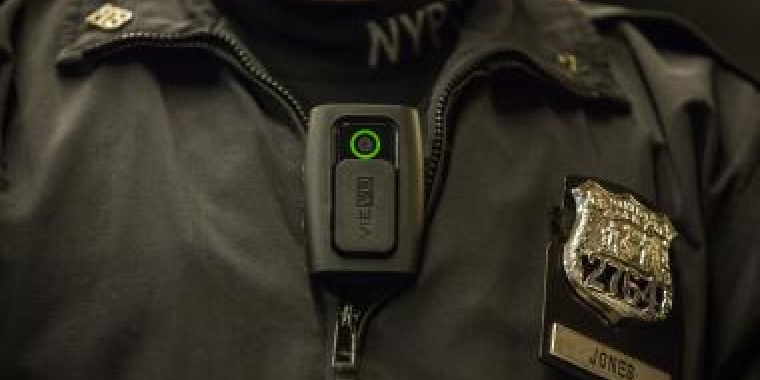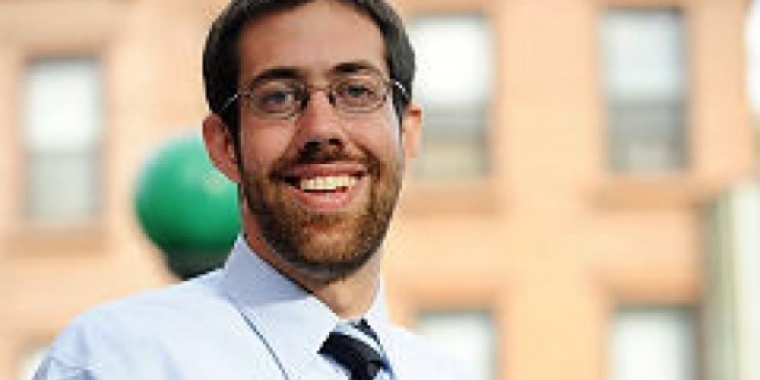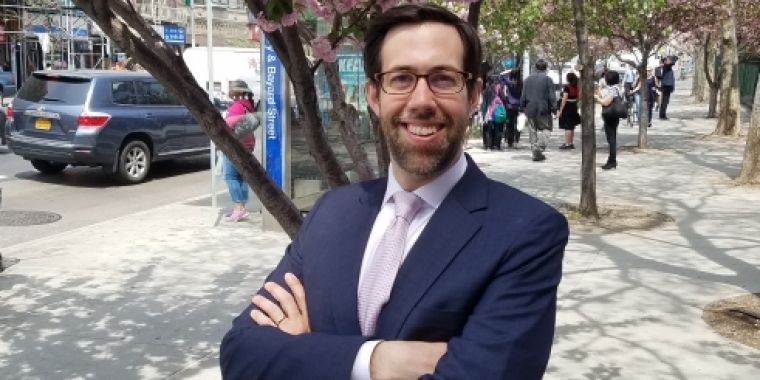
PREPARED TESTIMONY OF STATE SENATOR DANIEL SQUADRON TO THE FEDERAL HIGHWAY ADMINISTRATION AND PORT AUTHORITY OF NEW YORK AND NEW JERSEY PUBLIC HEARING ON THE CROSS-HARBOR FREIGHT PROGRAM
February 3, 2015
Below and attached is the prepared testimony of Senator Squadron to the Federal Highway Administration and Port Authority on the Cross-Harbor Freight Program.
My name is Daniel Squadron, and I represent the 26th District in the New York State Senate. My district includes the Manhattan neighborhoods of Tribeca, Battery Park City, the Lower East Side, Chinatown, the Financial District, Greenwich Village, Little Italy, SoHo and the East Village and the Brooklyn neighborhoods of Greenpoint, Williamsburg, Vinegar Hill, DUMBO, Fulton Ferry, Brooklyn Heights, Cobble Hill, and Carroll Gardens.
I would like to thank the Port Authority of New York and New Jersey and Federal Highway Administration for convening this hearing and providing the opportunity to testify on the Cross-Harbor Freight Program. I would also like to thank Congressmember Nadler for his nearly three decades of visionary leadership to modernize and improve cross-harbor freight movement in New York Harbor.
New York City has limited access to the national freight railroad network, which limits our freight capacity and forces us to rely on trucking for about 90% of freight movement within the region. This over-reliance results in freight traffic sharing the area’s limited number of congested crossings with cars and mass transit. This is particularly true with the George Washington Bridge, where the vast majority of freight enters, creating a chokepoint and possibly leaving the city vulnerable during times of emergency. Even with this limited capacity, truck traffic in the New York City region is projected to increase by 35% over the next 20 years, causing more congestion, more pollution, and increased costs in time lost to traffic and repairs to already overburdened roads and infrastructure.
The case is clear: increasing demand for freight traffic cannot be accommodated with more of the same. An alternative must be pursued, and the construction of a Cross-Harbor Tunnel is an important alternative. It would better connect New York City to the national freight railroad network, divert hundreds of thousands of trucks per year from the city’s streets, reduce carbon dioxide emissions by up to 110,000 tons each year, and increase our city’s resiliency by, among other things, providing another option for inbound supplies that could be used during emergencies like Hurricane Sandy.
Our dependence on trucking not only has city wide effects, but also has direct impacts on neighborhoods in my district, due, in particular, to the lack of eastbound tolls on the Verrazano Bridge, which causes heavy truck traffic along essential local thoroughfares like Canal Street in Manhattan.
Constructing a Cross-Harbor Tunnel would help move some truck traffic to rail, helping to better balance how freight moves through our city. In my district, that means direct positive impacts on our local community – from reduced pollution, to a less crowded Canal Street or Kent Avenue in Brooklyn.
While my district has some expensive real estate, it also has some of the more successful industrial areas, so I am highly conscious of the importance of allowing industrial businesses to grow while mitigating pollution and other impacts on residential and neighboring communities. Improved freight transportation infrastructure in the form of a Cross-Harbor Tunnel has the ability to accomplish both.
Further, the construction of the Cross-Harbor Tunnel is expected to create as many as 41,000 jobs both directly and indirectly, pumping up to $2.6 billion in wages into the city’s economy. This is in addition to the benefits of boosting freight capacity and resiliency, as well as helping to mitigate the environmental impacts of trucks in our neighborhoods. Supporting efficient freight through the construction of a Cross-Harbor Tunnel is an investment in the future.
I look forward to continuing to work with Congressmember Nadler, the Port Authority and FHWA, my colleagues, and the community to improve freight movement and further the economic and environmental vitality of New York City. Thank you for the opportunity to provide testimony today.



